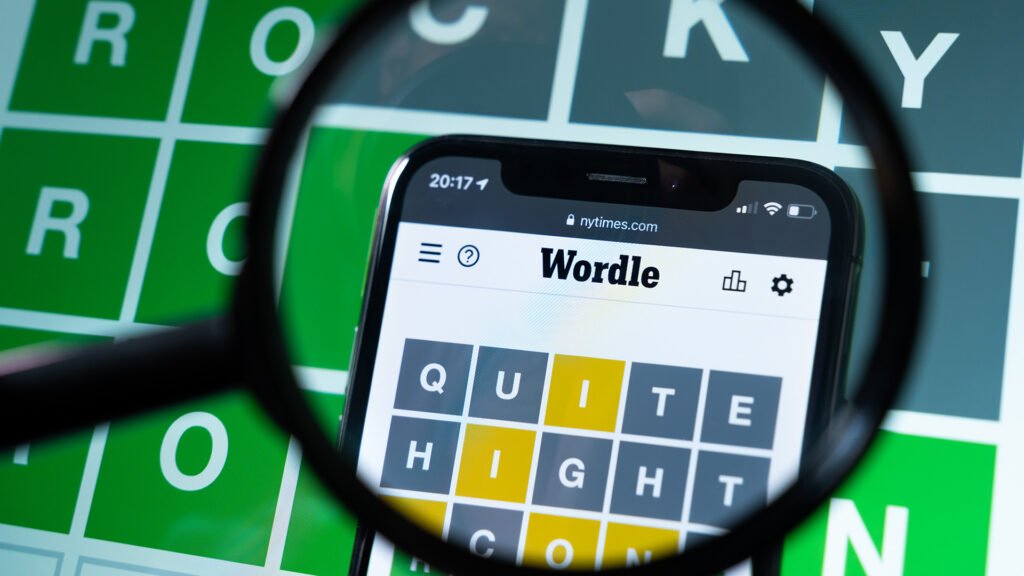Have you ever heard of the word puzzle game called Wordle? It’s become a global phenomenon! People all over the world are playing it daily, trying to guess the secret word. But how exactly do the wordle combinations work, and what makes them so addictive? In this article, we’ll dive deep into the world of Wordle, explore its mechanics, and offer tips for cracking the code every time. Whether you’re a beginner or a seasoned player, this guide will give you the insights you need.
What Is Wordle?
Wordle is an online word-guessing game where players try to figure out a five-letter secret word in six tries or fewer. After each guess, the game provides feedback by changing the colour of the letters:
- Green means the letter is in the right spot.
- Yellow means the letter is in the word but in the wrong spot.
- Gray means the letter isn’t in the word at all.
Sounds simple, right? Well, it can be a lot trickier than it looks. The challenge lies in figuring out the right wordle combinations as quickly as possible.
The Magic Behind Wordle Combinations
What makes Wordle so fascinating is the endless variety of wordle combinations that can be used. Since players need to guess five-letter words, the number of possible combinations is enormous! Wordle has a pool of words it selects from, but understanding the patterns behind these wordle combinations can give you an edge in your game.
A five-letter word in English can be formed from 26 letters. If we were to consider all possible five-letter combinations, that would result in over 11 million possibilities! Fortunately, Wordle limits its word choices to commonly used words, making it a bit more manageable.
Common Letters in Wordle Combinations
Some letters in the English language appear more frequently in words than others. For example:
- The most common vowels are A, E, I, O, and U.
- Among consonants, R, T, N, S, and L appear most often.
Knowing this can help you create better wordle combinations when guessing. Instead of starting with random words, consider using words with common letters first.
How Wordle Combines Strategy with Fun
Wordle is not just about randomly throwing out guesses. It’s a game of logic, deduction, and vocabulary. The feedback you get from each guess narrows down the possible wordle combinations for the next round.
Here’s a quick strategy breakdown for finding the right word:
- Start with a Strong Word: Many players like to use words with lots of vowels and common consonants. For example, words like “ARISE” or “SLATE” are popular first guesses.
- Eliminate Unnecessary Letters: Once you see which letters aren’t in the word (those that turn grey), you can eliminate many possibilities.
- Use Feedback to Narrow Choices: If you get green or yellow letters, try to rearrange them in new wordle combinations to get closer to the solution.
- Please pay attention to Letter Placement: Yellow letters mean they’re in the word but in the wrong spot. Don’t ignore their importance—try to place them in different positions in your next guess.
Exploring Different Wordle Combinations
Let’s take a look at the potential combinations of letters and how they can help in solving the puzzle faster. By using a combination of frequently appearing letters and strategic guessing, you can drastically cut down the number of possible answers.
| Letter Position | Common Letters | Examples |
|---|---|---|
| 1st Letter | S, C, T, P, B | STORM, CRISP, TABLE |
| 1stLetterr | H, R, L, A, O | SHEAR, GRAPE, BLOOM |
| 2ndLetterr | A, O, I, U, E | CHAIR, CROWD, GLUE |
| 3rdLetterr | N, T, L, E, R | PLANT, SWEET, LATER |
| 4thLetterr | E, Y, T, D, R | CRANE, PARTY, MIGHT |
These patterns can give you clues about which letters to try in specific positions, helping to narrow down wordle combinations more efficiently.
The Role of Vowels and Consonants in Wordle Combinations
Vowels play a crucial role in most five-letter words. Think about it—almost every word contains at least one vowel, and sometimes even two or three! Using a vowel-rich word in your first guess is a solid strategy because it reveals a lot of information. Here are some tips for working with vowels and consonants:
- Try using two vowels in the first word: This helps identify if the secret word contains more than one vowel.
- Balance vowels and consonants: For example, the word “CRANE” contains two vowels and three consonants, making it a well-rounded first guess.
- Avoid guessing words with rare letters: Letters like Z, Q, X, and J are less common in Wordle combinations, so avoid them in early guesses.
Wordle Combinations: Common Mistakes to Avoid
Even the best players make mistakes, but understanding what to avoid can help you improve your ability to solve wordle combinations.
- Guessing without Strategy: Don’t just throw out random words. The feedback from your previous tries should inform each guess.
- Ignoring Yellow Letters: It can be tempting to focus only on the green letters, but yellow letters are just as important! They tell you which letters are in the word, just in the wrong place.
- Reusing Gray Letters: If the game tells you a letter isn’t in the word at all, don’t waste guesses by using it again.
- Not Considering Repeated Letters: Sometimes, the answer contains two of the same letters. Don’t forget this possibility!
Advanced Wordle Tactics for Mastering Wordle Combinations
Once you’ve got the basics down, you can take your game to the next level with some more advanced tactics.
Look for Letter Pairs
Certain letters often appear together in English. For example:
- TH (as in “THOSE”)
- CH (as in “CHAIR”)
- SH (as in “SHINE”)
When you’ve guessed part of the word and see a combination like “TH” or “SH,” it can drastically narrow down the wordle combinations left to try.
Plan Two Guesses Ahead
Sometimes, one guess isn’t enough to figure out the word. When this happens, plan your next two guesses carefully. Use words that don’t repeat too many of the same letters so you gather the maximum amount of new information.
Test for Double Letters
Sometimes, the word will contain two of the same letters, like in “LLAMA” or “SWEET.” If you’re struggling, it might be worth testing this theory, especially if other options seem to be running out.
Fun Facts About Wordle Combinations
- There are over 2,000 possible solutions in Wordle’s word bank, but that’s just a tiny fraction of all the five-letter words in the English language!
- The wordle combinations that Wordle uses are specifically chosen to be familiar and expected so that you won’t be guessing obscure words.
- Wordle was created by software engineer Josh Wardle (get it, Wordle?) as a gift for his partner, and it became a viral hit almost overnight!
Why Wordle Combinations Make the Game So Addictive
The natural appeal of Wordle is how it blends simplicity with challenge. The infinite possibilities of wordle combinations keep players coming back for more. With every guess, you feel a little closer to cracking the code. The mix of logic, vocabulary, and the thrill of getting that “Aha!” moment is what makes Wordle so satisfying.
Plus, Wordle’s once-a-day format adds to its allure. There’s only one puzzle per day, which means players often find themselves eagerly awaiting the next one. Unlike other games where you can binge for hours, Wordle keeps you coming back regularly.
Conclusion: The Joy of Discovering Wordle Combinations
Playing Wordle is about more than just guessing words. It’s about honing your problem-solving skills, expanding your vocabulary, and learning the subtle art of wordle combinations. Whether you’re new to the game or a seasoned pro, understanding the structure of words, using strategic guesses, and applying a bit of logic can make all the difference.
The next time you sit down to play, remember that every word has a pattern, and the right combination is always just a few guesses away. So dive in, enjoy the challenge, and happy Wordling!
Now that you’ve read about the fun and strategy behind wordle combinations, you’re better equipped to tackle the puzzle head-on. What are you waiting for? It’s time to test your skills in your next Wordle challenge!
You may also read



